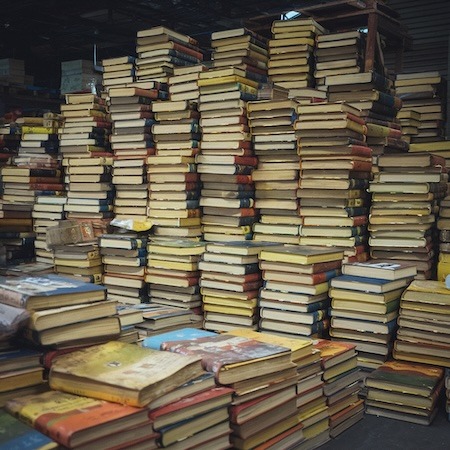Book printing in China tempts with low costs and large scale production. However, not all gold that glitters. If you care about ecology and quality, you need to know some facts. Here are four reasons to think about printing in Asia.
1. China’s book printing generates high transportation carbon footprint
Books printed in China have to travel a long way to Europe. Transport ships emit huge amounts of CO₂. This significantly increases the carbon footprint of production.
Shipping accounts for about 3% of global CO₂ emissions. Each book traveling thousands of kilometers is an additional burden on the environment. Choosing local printers can significantly reduce greenhouse gas emissions.
In addition, transportation time is up to several months. This means planning long before the sale. Is this worthwhile? In environmental terms – rather not.
2. Book printing in China often fails to use sustainable raw materials
Book printing in China often relies on paper from uncertified sources. FSC or PEFC certification is not standard there. If you want eco-friendly printing, it’s worth asking about the origin of the paper.
Some Chinese paper mills use wood from rainforest logging. This leads to environmental degradation and biodiversity depletion. Local printers in Europe have better control over the origin of raw materials, so you can be sure that the paper is responsibly sourced.
What’s more, some printers in China use lower quality paper, which deteriorates faster. This means a shorter book life cycle and a greater need for new prints.
3. Book printing in China vs. use of chemicals and environmental standards
Chinese printers do not always use eco-friendly inks and adhesives. In Europe, vegetable-based inks and solvent-free adhesives are the standard. In China, cheap substitutes are still used.
Some Chinese printers are certified organic. Unfortunately, many still use older technologies and cheaper chemicals. Such substances can not only be harmful to the environment, but also to the health of book users.
Solvent-based inks can emit volatile organic compounds (VOCs). These compounds contribute to smog and negatively affect human health. By choosing local printers, you can be more confident that your books are printed in accordance with environmental standards.
4. Problematic recycling
Book printing in China does not always include recycling. Many books printed in Asia are difficult to recycle. This may be due to the type of adhesives, inks or paper mix.
Some books printed in China have laminated plastic film covers, making it difficult to recycle. In Europe, there is an increasing focus on the closed economy. Companies are making sure materials can be easily recycled. In China, recycling often fails to meet these standards.
It’s worth noting that waste separation is less strict in China. This means that books that end up in the waste stream are less likely to be recycled into new raw materials. In Europe, paper recycling is more efficient, and materials can be reused in printing.
Is it worth printing locally?
Printing books in China comes at a price – and it’s not just about money. When you choose European printers, you support the environment and the local market. A smaller carbon footprint, quality control and sustainable raw materials are huge advantages.
It’s not always worth it to be driven by cost alone. Think about the long-term benefits to the environment and product quality. By choosing a printer closer to you, you can be sure that your books are more eco-friendly.
Printing books in China may seem tempting, but it has its downsides. By choosing local, you not only support the environment, but also have more control over quality. If you’re committed to conscious printing, it’s worth carefully weighing all the pros and cons.





